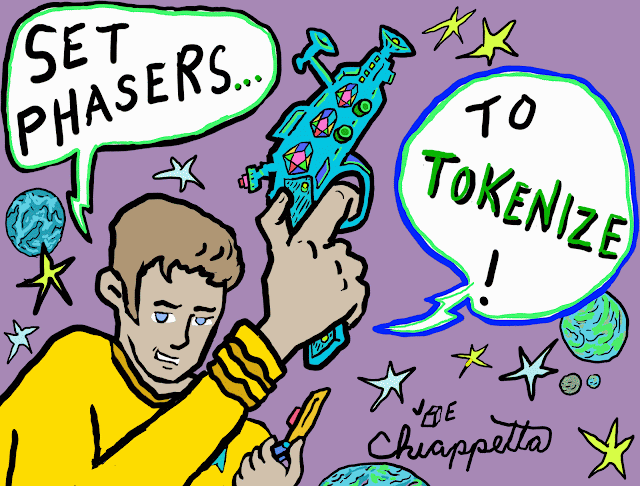This animated sci-fi image will soon be available as rare digital art on the Grand pixEOS Art Gallery. I drew it first as a quick sketch on my big old Samsung Galaxy Note 3. That's an over-sized phone that came with stylus and I have used it as a mini drawing pad reliably for almost 6 years. It seems fitting that a somewhat space-age handheld device was used to create this art inspired by space-age classic science fiction themes. Old shows such as Star Trek and others have become famous for introducing handheld devices that were decades ahead of their time.
Why would anyone want to collect rare digital art? We are speaking of monetizing digital art, which is an innovation ahead of its time--yet here now. Rare digital art is deserving of more attention and I do think someone should win a Nobel Prize in Economics for its inception. In fact, the benefits and interesting traits of rare digital art are worth listing all together. The below list can be used to help art collectors see the benefits of collecting rare digital art.
Characteristics of Rare Digital Art
- Digital art can be issued in a limited supply (similar to limited-edition prints)
- Instant or near-instant sales powered by the speed of blockchain
- International market exposure
- Digital art becomes a personal collectible item
- Ownership data available to everyone
- Ownership of digital art is transferable
- Creators and collectors can set flat rate for art sales or accept bids
- Royalties for secondary sales can be written into the blockchain so artist automatically receives a percentage of resale price each time a collector sells that artist's work to another collector
- Artwork is as durable as the Internet, the blockchain that holds the art data, and the server(s) that stores the image
- Art collectors can easily publicize their collection
- Collectors can show people their collection in person from their own phones
- Artists can easily keep track of art with release dates and any other data included in that art's release description
- All sales final: non-reversible
- Technology prone to attract new audiences, including younger audiences
- Typically lower price of art (less art material cost) makes collecting art more accessible to wider range of collector income levels
- Rare digital art has overlap with rare gaming items, increasing the potential for new art audiences
- Art can be static image or an animated piece
- Artists are more likely to trade limited-editions with other artists
- Artists can host giveaway art events without shipping or physical production costs
- Physical art can be bundled with rare digital art as an option
- Cryptocurrency price volatility may be a good thing (if crypto price goes up), or a bad thing. Yet even if a bad thing (as in the price of crypto goes way down) the artists involved still gain market exposure to new audiences.
Yes, any user can still simply copy and paste images onto their own devices. But that is not the point. Now, for collectors who want a way to collect digital art directly from an artist through an authorized and collectible means, the technology is here today to make that happen while also tracking ownership and date of sale. Furthermore, collectors have an authorized means of reselling that rare digital art to a new owner on the blockchain.
Physical art trade and exchange has always been possible. Now digital art trade and exchange is also possible. Transfer or ownership, bidding, discounting, limited supply... all those features that the physical art world has enjoyed have now come to rare digital art.
What Makes Rare Digital Art Possible?
Rare digital art means that on a blockchain, the cryptocurrency (or tokens) issued through these networks are now able to be linked to specific artworks. The artwork details get coded and recorded on the blockchain. This data is designed to last for the lifetime of that blockchain. In the same way that cryptocurrency creators can specify how many units of their cryptocurrency they will release to the world in a limited supply, and which users own which cryptocurrencies, the same features are now happening with digital art.For example, on the Bitcoin blockchain, the total supply of Bitcoin has been coded to be 21 million. That means only 21 million Bitcoins will ever be in existence... and that's it. In similar fashion, digital art can now be linked to tokens on a blockchain that have a limited supply.
So take the above sci-fi art image I created. When I release it on a blockchain through pixEOS, it will be written into the code to issue this art linked to a limited supply of only 1 token. This is where the "rare" from the term "rare digital art" comes from. Once issued, only 1 image of "Tokenization: The Final Frontier" will ever be available to be bought and sold on that blockchain. Many can be copied infinitely. But only one copy can be monetized--the one image that I link to the blockchain, to be collected by only once collector at a time. Perhaps that one person will be you!
That is why I, along with many other rare digital artists, have "set phasers to tokenize!"
Joe Chiappetta
http://SillyDaddy.net
